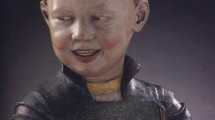Abstract
The capacity of the human face to affect behavior in the observer is obvious and unquestioned, yet we lack a usable philosophy of facial expression. This essay looks at one effect of the face in its highest moment of expressiveness: it discusses the redemptive force of a woman’s face, as portrayed in Dante’s works and in the modern film. Beatrice’s face becomes a mediator to heaven and thus establishes a long tradition of that trope in Petrarchan love lyric. The invention of photography and cinema enabled nuanced, emotionally charged facial representation that departed from the affect-free pictorial representation of woman’s face from the eighteenth to the twentieth century. In Michael Hazanivicius’s film The Artist, the face of a redemptive woman mediates access to a compassionate world of charm, glamour, and innocence.









Similar content being viewed by others
Notes
Max Weber notes the two conditions for the perception of charisma: ‘need’ (or ‘suffering’; German, not) and ‘enthusiasm’ (Weber, 1968).
References
Adorno, T. 1991. The Culture Industry: Selected Essays on Mass Culture. London: Routledge.
Allen, W., dir. 1980. Stardust Memories. Rollins-Joffe Productions.
Barthes, R. [1957] 1999. The Face of Garbo. Mythologies. New York: Hill and Wang.
Basinger, J. 2009. The Star Machine. New York: Vintage.
Benjamin, W. 2003. The Work of Art in the Age of its Technological Reproducibility. In Selected Writings, vol. 4, ed. H. Eiland and M. W. Jennings, 251–283. Cambridge, MA: Harvard University Press.
Alighieri, D. 1991a. Paradiso. The Divine Comedy, 3 vols., trans. C. S. Singleton. Princeton, NJ: Princeton University Press.
Alighieri, D. 1991b. Purgatorio. The Divine Comedy, 3 vols., trans. C. S. Singleton. Princeton, NJ: Princeton University Press.
Alighieri, D. 2014. The Convivio, trans. R. Lansing. Digital Dante, Columbia University, http://digitaldante.columbia.edu/library/dantes-works/the-convivio/.
Darwin, C. 2009. Expression of the Emotions in Man and Animals, 4th ed., ed. Paul Ekman. Oxford, UK: Oxford University Press.
Fellini, Federico, dir. 1960. La Dolce Vita. Riama Film.
Fellini, Federico, dir. 1963. 8 ½. Cineriz, Francinex.
Goffman, E. 1982. Interaction Ritual: Essays on Face-to-Face Behavior, New York: Pantheon.
Gottfried von Strassburg. 1967. Tristan: With the Surviving Fragments of the ‘Tristran’ of Thomas, trans. A. T. Hatto. London: Penguin.
Gottfried von Strassburg. 2001. Tristan: Mittelhochdeutsch / Neuhochdeutsch, 3 vols., trans. R. Krohn, ed. F. Ranke. Stuttgart, Germany: Reclam.
Hazanavicius, M., dir. 2011. The Artist. Studio 37 Orange, La Petite Reine, et al.
Jaeger, C.S. 2012. Enchantment: Charisma and the Sublime in the Arts of the West. Philadelphia, PA: University of Pennsylvania Press.
Jones, C. 2014. The Smile Revolution in Eighteenth-Century Paris. Oxford, UK: Oxford University Press.
Koepnick, L. 2007. Dietrich’s Face. In Dietrich Icon, ed. G. Gemünden and M. R. Desjardins, 43–59. Durham, NC: Duke University Press.
Levinas, E. 1983. Beyond Intentionality. In Philosophy in France Today, ed. A. Montefiore. Cambridge, UK: Cambridge University Press.
Panofsky, E. 1968. Idea: A Concept in Art Theory. New York: Icon.
Sartre, J.-P. 1957. Being and Nothingness, trans. H. E. Barnes. New York: Philosophical Library.
Weber, M. 1968. Max Weber on Charisma and Institution Building, ed. S. N. Eisenstadt. Chicago, IL: University of Chicago Press.
Author information
Authors and Affiliations
Corresponding author
Rights and permissions
About this article
Cite this article
Jaeger, C.S. The redemptive power of the face: from Beatrice (Portinari) to Bérénice (Bejo). Postmedieval 8, 67–82 (2017). https://doi.org/10.1057/s41280-016-0037-8
Published:
Issue Date:
DOI: https://doi.org/10.1057/s41280-016-0037-8




